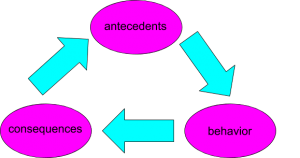Applied Behavioral Analysis -- The Basics
What is Applied Behavior Analysis? and Why is it important?
First we need to know some basics…
Behaviorism is a psychological concept that is defined as an approach to understanding how humans and other species behave. There are a few basic assumption of behaviorism, including: all behavior is learned from the environment, psychology is a science, primarily concerned with observable behavior, and behavior is a result of stimulus-response. There are two well-known types of behaviorism: methodological behaviorism and radical behaviorism. Methodological behaviorism, first written about by John Watson, revolves around the goal of predicting behavior and in turn learning to control it. Radical behaviorism, founded by B.F. Skinner, adds onto methodological behaviorism in the sense that mental events can be used to analyze behavior.
Autism first thought to be an extreme form of schizophrenia was first coined by Eugen Bleuler in 1911. Autism Spectrum Disorder is defined as a developmental and intellectual disorder that affects behavior and communication. Characteristics of autism include but are not limited to: repetitive behaviors, restricted interests, difficulty communicating, and difficultly to interact with others (“Autism Spectrum Disorder”, National Institute of Mental Health).
Basics of Behavioral Learning
- The A, B, C’s of Behavioral Learning
- A – Antecedents (something that existed before [another word = stimuli])
- B – Behavior (another word = response)
- C – Consequences

